Discover 20 hidden attractions, cool sights, and unusual things to do in Regensburg (Germany). Don't miss out on these must-see attractions: Stone Bridge, Regensburg Cathedral, and Haus der Bayerischen Geschichte: Museum. Also, be sure to include Regensburg Museum of Danube Shipping in your itinerary.
Below, you can find the list of the most amazing places you should visit in Regensburg (Bavaria).
Table of Contents
Stone Bridge

Also known as: Steinerne Brücke
Iconic 12th-century stone bridge. The Stone Bridge in Regensburg, Germany, is a 12th-century bridge across the Danube linking the Old Town with Stadtamhof. For more than 800 years, until the 1930s, it was the city's only bridge across the river. It is a masterwork of medieval construction and an emblem of the city.[1]
Address: Steinerne Brücke, 93059 Regensburg
Regensburg Cathedral
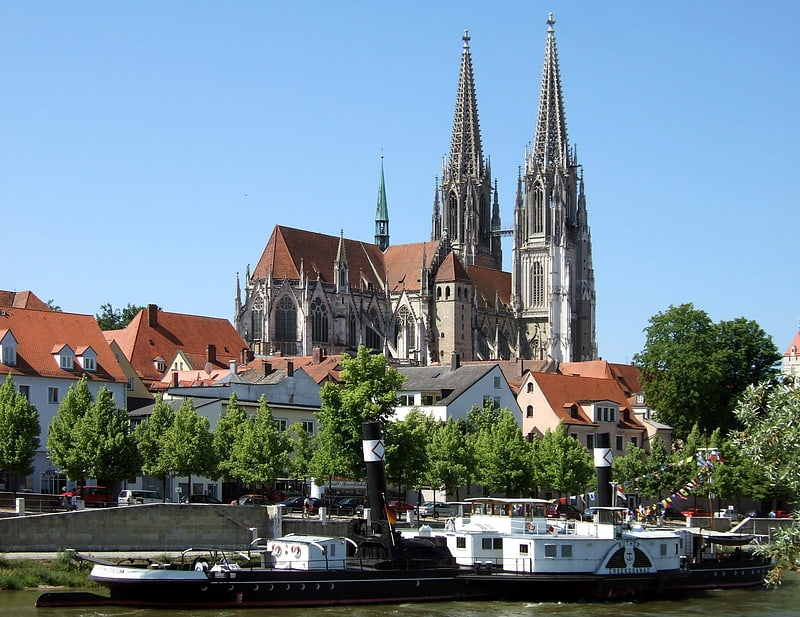
Also known as: Regensburger Dom
Cathedral in Germany. Regensburg Cathedral, also known as St. Peter's Cathedral, is an example of important Gothic architecture within the German state of Bavaria. It is a landmark for the city of Regensburg, Germany, and the seat of the Catholic Diocese of Regensburg.[2]
Address: Domplatz 1, 93047 Regensburg
Haus der Bayerischen Geschichte: Museum
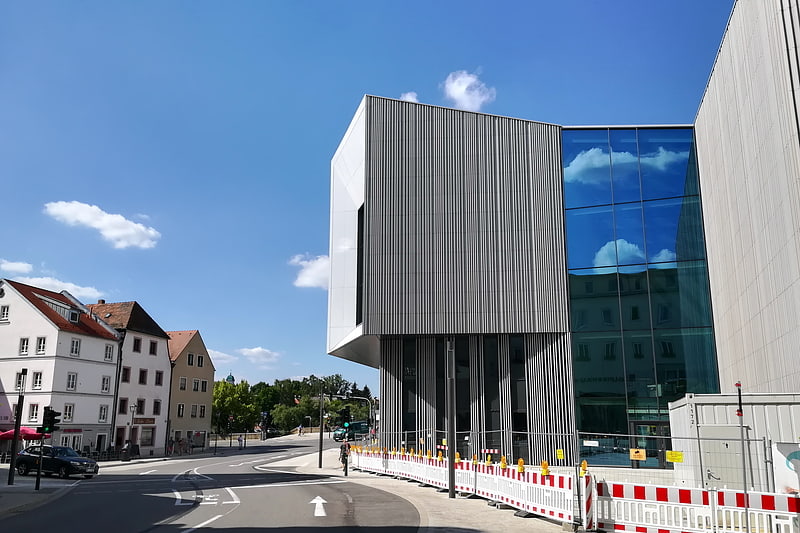
The Haus der Bayerischen Geschichte: Museum is a history museum about the history of Bavaria, located in Regensburg. It is part of Haus der Bayerischen Geschichte which is financed by the state government.
It opened on June 5th, 2019. The director is Richard Loibl.
The permanent exhibition area measures 2500 m2 and displays c. 1,000 objects in the time span from 1806 (Kingdom of Bavaria) until the present time.
The construction of the building and the interior cost c. 95 million euros.[3]
Address: 1 Donaumarkt, Regensburg
Regensburg Museum of Danube Shipping
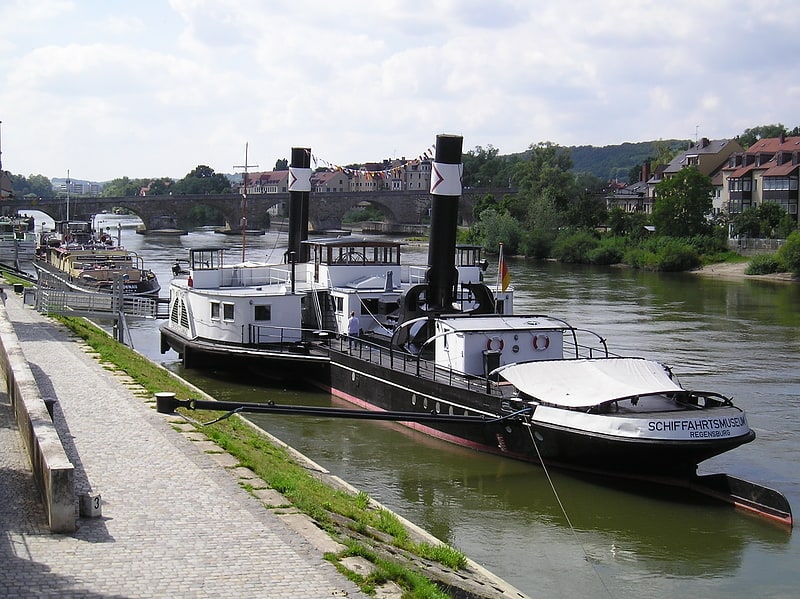
Also known as: Donau-Schiffahrts-Museum Regensburg
Museum in Germany. The Regensburg Museum of Danube Shipping is a maritime museum of river shipping on the river Danube and other rivers, sited in the town of Regensburg in Germany. It also contains art collections on that topic, along with material on boatmen's work and training. Its main exhibits are the steam tugboat Ruthof / Érsekcsanád and the diesel tug Freudenau.[4]
Address: Thundorfer Strasse, Regensburg
Public Observatory Regensburg
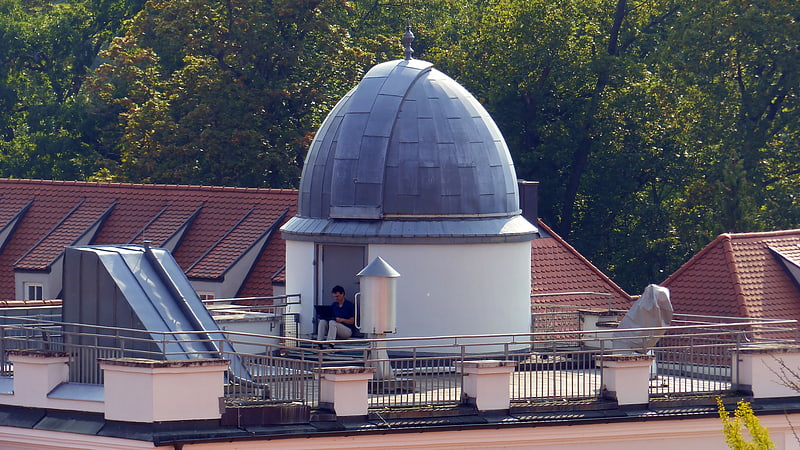
The Public Observatory Regensburg is an astronomical observatory located in Regensburg, Germany. Its history dates back to the year 1774 when Saint Emmeram's Abbey dedicated two towers to astronomical observations. For the most time, it served for educational purposes. Today it is run by a non-profit organization, the Verein der Freunde der Sternwarte Regensburg e.V.. The observatory is accessible for visitors on Friday evenings.[5]
Address: 2 Ägidienplatz, Regensburg
Saint Emmeram's Abbey

Also known as: Kloster Sankt Emmeram
Abbey. Saint Emmeram's Abbey, now known as Schloss Thurn und Taxis, Schloss St. Emmeram or St. Emmeram's Basilica, was a Benedictine monastery founded in about 739 at Regensburg in Bavaria at the grave of the itinerant Frankish bishop Saint Emmeram.[6]
Address: Emmeramsplatz 3, Regensburg
Scots Monastery

Also known as: St. Jakob
Abbey. The Scots Monastery is the former Benedictine Abbey of St James in Regensburg, Germany. It was founded in the 11th century by Irish missionaries and for most of its history was in the hands of first Irish, then Scottish monks. In Middle Latin, Scotti meant Gaels, not differentiating Ireland from Scotland, so that the term Schottenstift dates from the Irish period. The full official name of the actual church, the most prominent building within the abbey complex, is Die irische Benediktinerklosterkirche St. Jakob und St. Gertrud.[7]
Address: Jakobstraße 3, 93047 Regensburg
Alte Kapelle
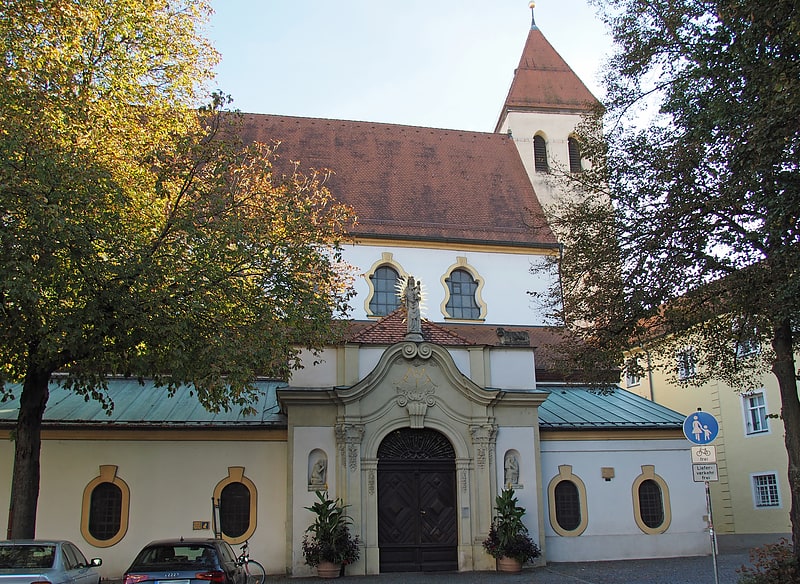
Also known as: Stiftskirche zur Alten Kapelle
Church in Germany. The Basilica of the Nativity of Our Lady also Basilica of the Nativity of Our Lady to the Ancient Chapel or Alten Kapelle It is the oldest Catholic place of worship in Bavaria and one of the most important churches in the city of Regensburg, in the south of Germany.
The collegiate church and smaller basilica is part of an old abbey dedicated to the Virgin founded by the emperor Henry II, ruler of the Holy Roman Empire in the 1002. With a baroque style of the 18th century, it is one of the masterpieces of the rococo decoration in Europe, in the style dictated by the School of renown Wessobrunn.
A first chapel was built by order of Charlemagne in the place where, according to tradition, the Roman temple dedicated to Juno was built. The chapel which was built after the fall of the Roman Empire of the West seems to have been the oldest in Bavaria and this earned it the nickname "Alte Kappelle", the «Old Chapel».
In 1964, at the suggestion of Bishop Rudolf Graber, the Collegiate Church of Our Lady of the Old Chapel was elevated to a smaller basilica by Pope Paul VI.[8]
Address: Schwarze-Bären-Straße 7, 93047 Regensburg
Nibelungenbrücke
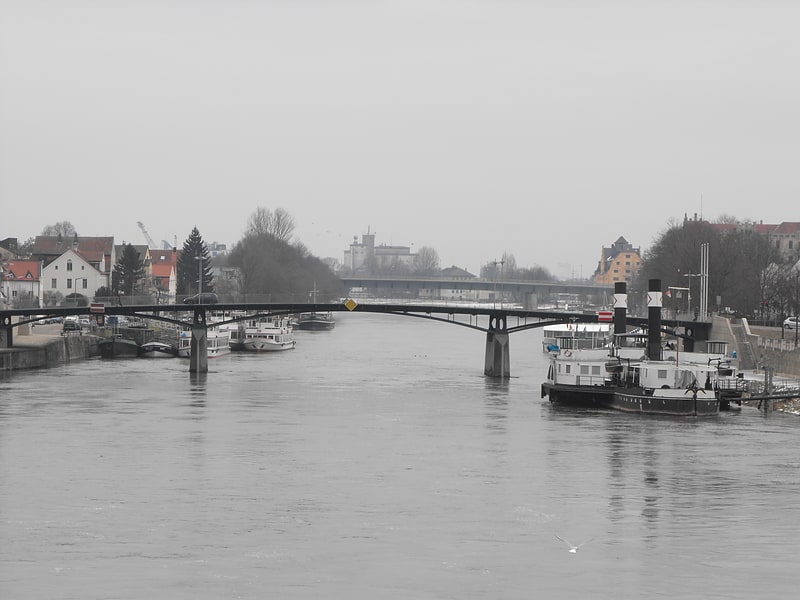
Bridge in Germany. The Nibelungen Bridge is a dual road bridge with two sections spanning both arms of the Danube at kilometre mark 2378.39 in Regensburg, Germany. The current bridge, the third on the site, was erected in 2001–04 to replace a bridge erected in 1950 which was no longer adequate for traffic demands, and which had replaced a bridge built in 1938 and destroyed in World War II. Carrying an average of 42,000 vehicles a day, it is one of the most important bridges in the Regensburg area.[9]
Niedermünster
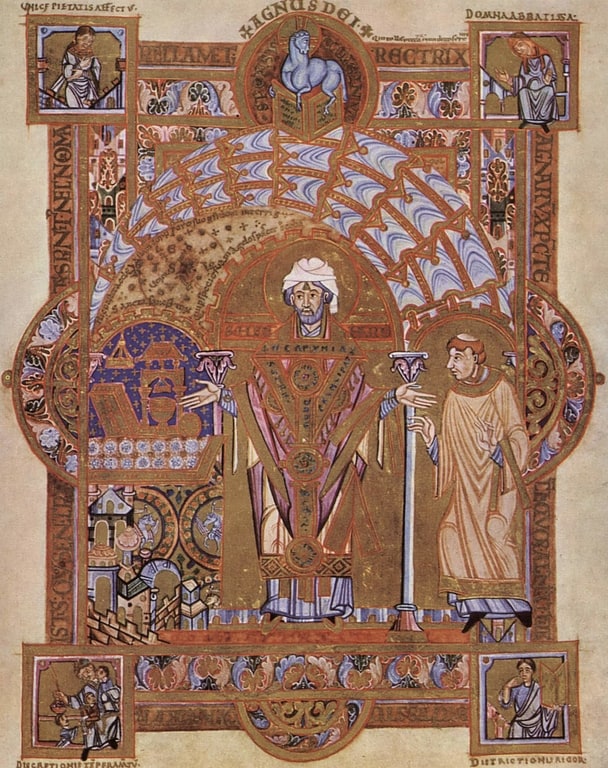
The Niedermünster or Niedermünster Abbey, Regensburg, was a house of canonesses in Regensburg, Bavaria, Germany. At the height of its power it was one of the wealthiest and most influential in Bavaria. The church is still in use as the parish church of Regensburg Cathedral.[10]
Address: Niedermünstergasse 6, 93047 Regensburg
Herzogspark
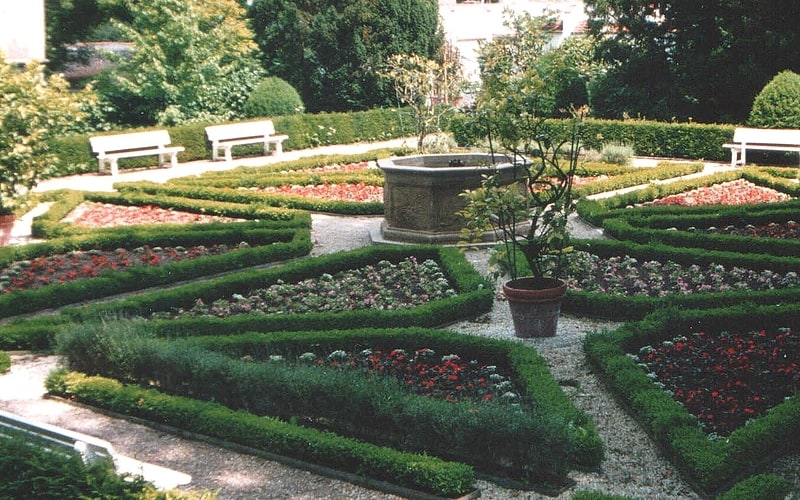
Park in Germany. Herzogspark is a 1.5 hectare municipal park, with small botanical garden, located on the banks of the Danube at the western edge of the old city, at Hundsumkehr Strasse, Regensburg, Bavaria, Germany.
The park dates to 1293, when a new wall was constructed after enlargement of the city. Its moat now forms part of the landscape. The site became a private garden in 1804, subsequently owned by the Princely House of Thurn and Taxis, and served its Württembergisches Palais served as the residence of Duchess Maria Sophia of Württemberg (née Princess of Thurn and Taxis). It 1935 it became municipal property, and in 1950-1952 was converted to a public park. Today it contains the following major features:
- The Prebrunnturm - A square medieval tower dating to 1293, open in the summer.
- Several small botanical gardens - an alpine garden with bell flowers, carnations, gentians, rhododendrons, primroses, etc.; rhododendron collection in the former moat; rose garden; lily pond with goldfish; and garden of southern plants.
- Renaissance garden - A new garden in the Renaissance style of geometric parterres edged by low boxwood hedges, with a Shakespeare garden along one hedge.
The adjacent Württembergisches Palais is now the Natural History Museum of Eastern Bavaria, and consists of three interconnected wings devoted to mineralogy, paleontology, zoology, and botany.[11]
Donau Arena
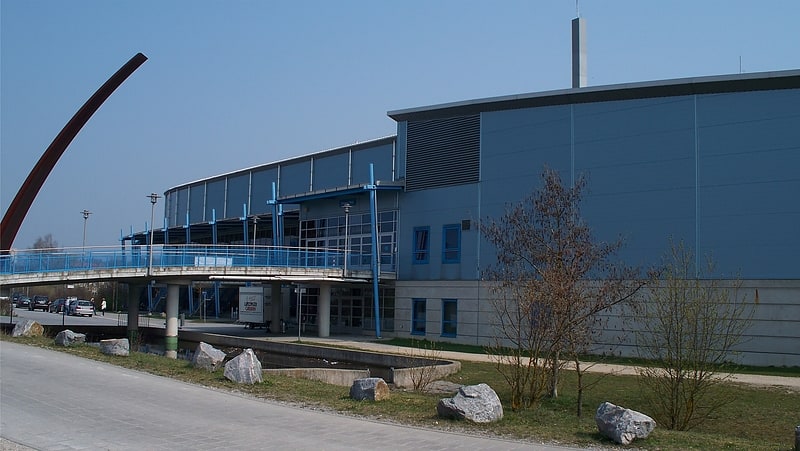
Also known as: Donau-Arena
Arena in Germany. Donau Arena is an arena in Regensburg, Germany. The arena opened in 2001 and holds 4,936 people.
It is primarily used for ice hockey.
- Bob Dylan performed at the arena during his 2000 European Tour on May 25, 2000.
- P!nk Performed at the arena on March 5, 2009 during her Funhouse Tour.
Address: Walhalla Allee 22, 93059 Regensburg
Schloss Höfling
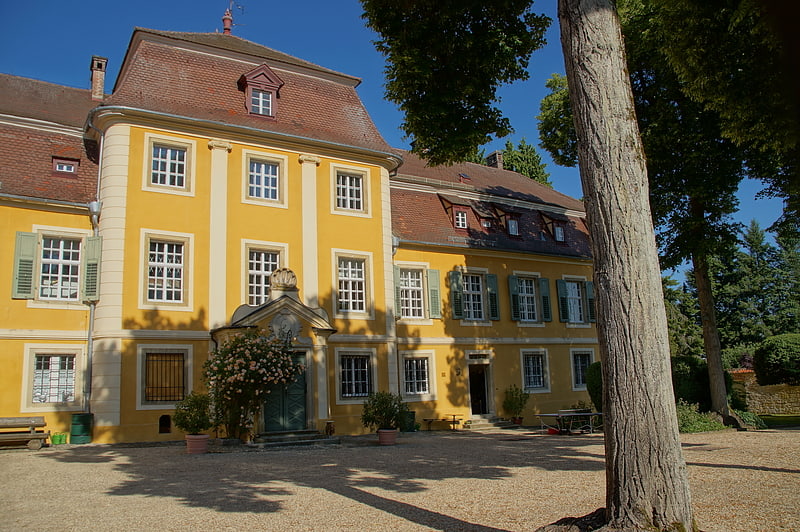
Schloss Höfling is a Baroque castle in Regensburg, Bavaria. In 1985 the castle, which is owned by the House of Thurn and Taxis, was leased for one hundred years to the Walderdorff family.[13]
Old Town Hall
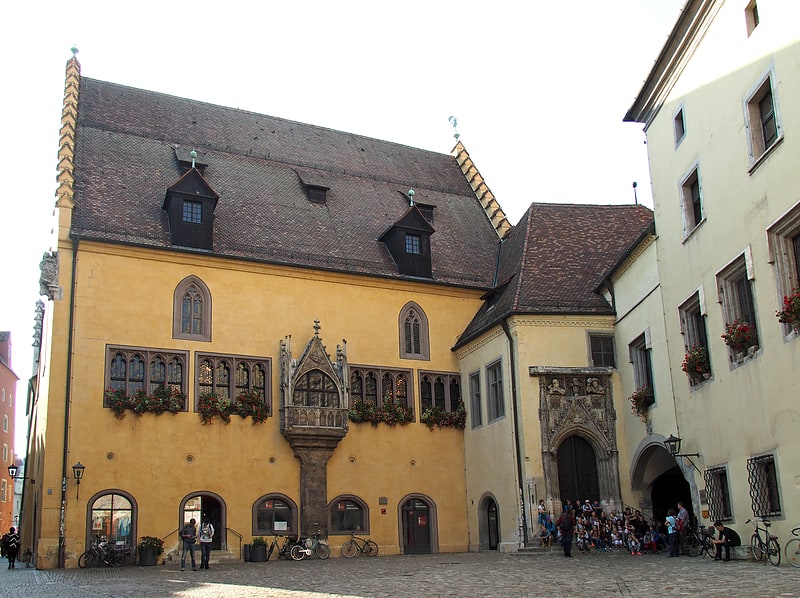
Also known as: Altes Rathaus
Old Town Hall in Regensbon - a building in Recationed, located in the oldest part of the city, at Rathausplatz 1.
The oldest part of the building is a tower with a height of 55 meters. It was built in 1260. The main part of the town hall was built at the turn of the 14th and 15th centuries. Aleksander Lesser designed the details of the town hall.
The object is Gothic, the west wing is yellow.
The eastern wing of the object is baroque and completed in 1723.
The constant Sejm of the Holy Roman Empire met for 140 years in the Reich Hall of the Town Hall.
Address: Rathausplatz 1, 93047 Regensburg
Neupfarrkirche
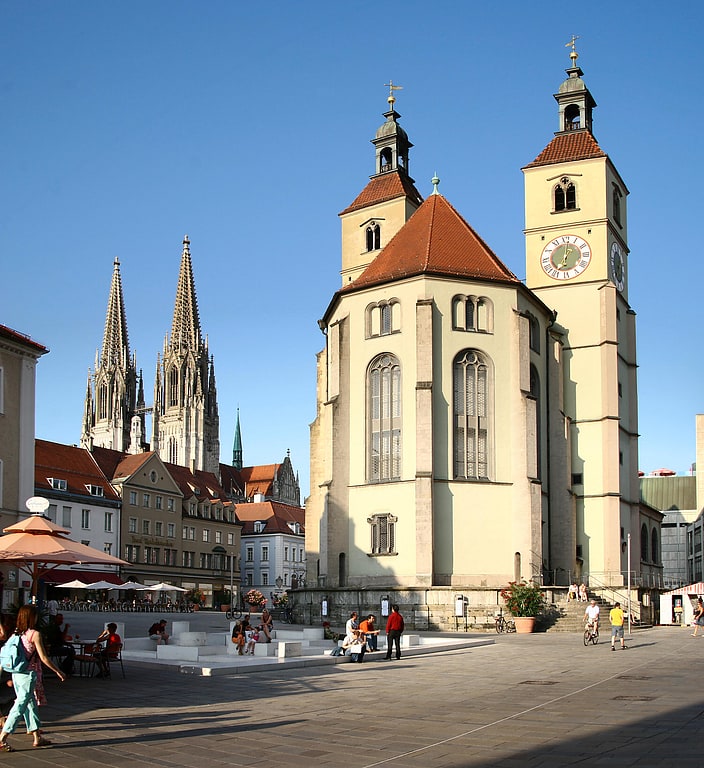
The Neupfarrkirche is a Protestant parish church on Neupfarrplatz in the old town of Regensburg. Construction of the church, originally planned as a Catholic pilgrimage church, began after the destruction of the Jewish quarter in 1519.
Address: Neupfarrpl. 1, 93047 Regensburg
Historical Museum
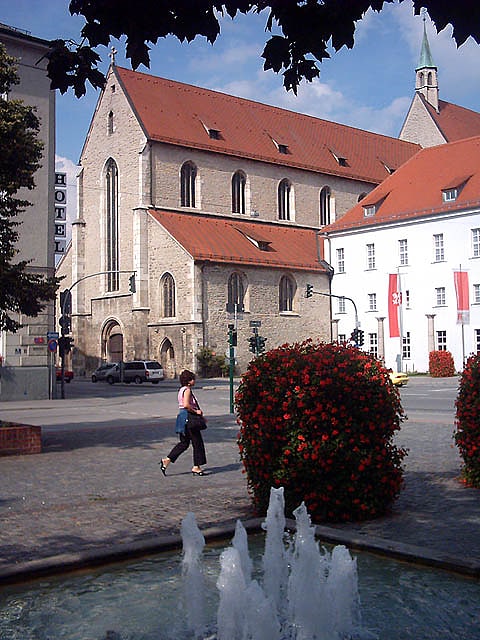
Also known as: Historisches Museum
Museum in Germany. The Regensburg Museum of History currently resides in a former Minorite monastery, is a museum of the history, art and culture of Regensburg and eastern Bavaria from the Stone Age to the present day.
The former monastery of St Salvator, located in the city's Dachauplatz district, was founded in 1221 by the Bishop of Regensburg Konrad IV of Frontenhausen, Count Otto VIII of Bavaria, and King Henry VII. The three-naved basilica church was considered the largest church of the order in southern Germany until its closure in 1799.
The church and most of its monastic buildings survived, with the monastic buildings converted as barracks and billets for the Bavarian Army, and the church as a customs hall, a drill hall and a hotel until it became the location of the Regensburg Museum of History in 1931.
It is run by the city of Regensburg.[14]
Address: Dachaupl. 2-4, 93047 Regensburg
Prüfening Abbey
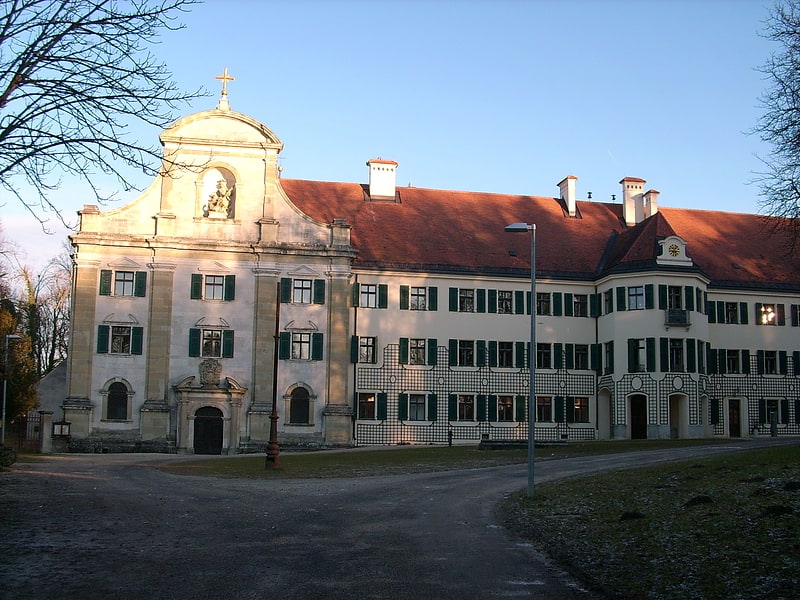
Also known as: Kloster Prüfening
Monastery. Prüfening Abbey was a Benedictine monastery on the outskirts of Regensburg in Bavaria, Germany. Since the beginning of the 19th century it has also been known as Prüfening Castle. Notably, its extant dedicatory inscription, commemorating the founding of the abbey in 1119, was created by printing and is a unique document of medieval typography.[15]
Golfmuseum Regensburg

Museum
Address: Tändlergasse 3, 93047 Regensburg
Museum Sankt Ulrich
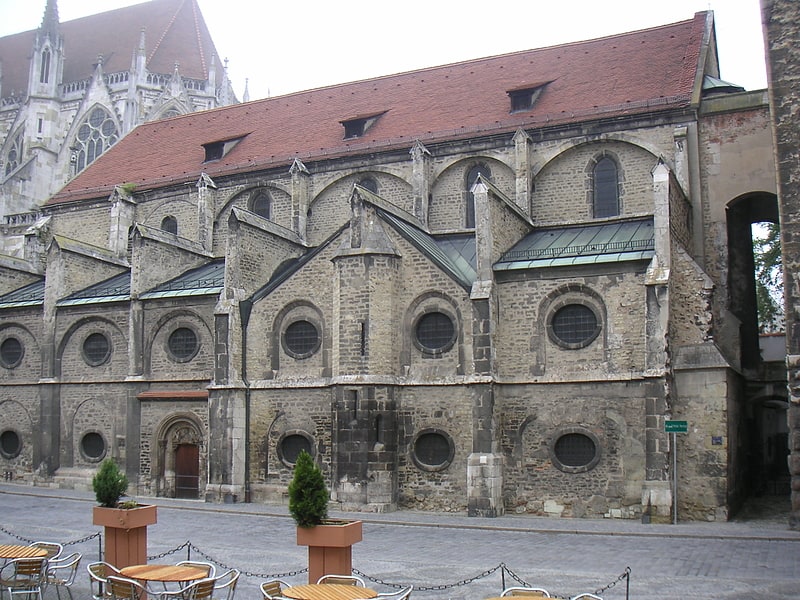
The former cathedral parish church of St. Ulrich in Regensburg stands to the east of Regensburg Cathedral where the southern cathedral square merges into the Alter Kornmarkt, with a swing arch connecting the Roman Tower with the former ducal palace of the Agilolfing dynasty. The church and the exhibition in the church are now part of the Regensburg Diocesan Museums.
Address: Domplatz 2, 93047 Regensburg
Runtingerhaus

With its construction beginning around 1200, the Runtingerhaus in Regensburg at Keplerstraße 1 is a historic building in the old town of Regensburg. With its early Gothic stepped gable house built in the mid-13th century, the building is one of the oldest and best preserved patrician houses of the Regensburg patriciate. In the following years, the building was expanded after acquisitions and additions, and in 1367 it came into the possession of the Runtinger family, one of the wealthiest families of merchant lords in Regensburg in the 14th century. The house remained in the possession of the Runtinger family until the 16th century. After that, the house was used as an inn and underwent several structural changes. In the 19th and in the 20th century the house complex was mainly used for residential purposes. After that, extensive renovation took place with the aim of public use.